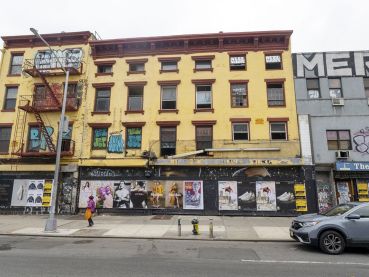NYC Building Permits Spike — But Only for One- to Three-Family Homes, Not Apartments
By Rebecca Baird-Remba February 9, 2024 5:00 pm
reprints
New York City’s slowing pipeline for new construction had a big spike at the end of 2023, but the majority of those new building applications were for one-, two- or three-family homes in the outer boroughs rather than much-needed apartment buildings, the Real Estate Board of New York found in its latest report.
There were 728 new building filings in the fourth quarter of 2023, a 113 percent increase from the previous quarter and a 73 percent increase from the fourth quarter of 2022, REBNY found.
While that seems like good news as the city continues to face a housing shortage, the increase was largely thanks to a record-breaking number of permit filing for one- to three-family homes, 568 applications to be exact.
In a rare exception, Staten Island had more new building filings than any other borough, 520, a 395 percent increase from last year. The borough accounted for 76 percent of new building filings in the fourth quarter, while Queens came in second with just 14 percent, followed by Brooklyn with 10 percent, the Bronx with 4 percent and Manhattan with 1 percent, the report found.
“This data makes clear that New York City is not building the kind of multifamily rental housing needed to address our worsening supply crisis,” said Zachary Steinberg, the REBNY senior vice president of policy. “Without policies in place to spur greater rental housing construction, one cannot expect this problem to fix itself. Elected officials in Albany must take action to create new housing that will support our housing market and broader economy.”
REBNY blames the spike in smaller-home construction on New York City’s building electrification law — Local Law 154 — which went into effect on Jan. 1. The legislation requires new buildings under seven stories to be fully electric — with exceptions for certain industrial uses, labs, hospitals and utilities — so developers who wanted to build small homes with older forms of gas heating rushed to get their permits in by the end of 2023, according to REBNY.
Despite the increase in permits, the total square footage proposed — 6.2 million — represented a 58 percent decrease from the fourth quarter of 2022. The last quarter of 2023 saw only two filings for buildings more than 300,000 square feet, eight fewer than 2022 and a 33 percent decline of the quarterly average since 2008. Developers proposed 4,406 units, a more than 50 percent decrease from the same time a year ago.
REBNY has long pinned blame for the decline in new building and foundation permits for larger properties on the loss of the 421a tax exemption for new rental construction in June 2022. Gov. Kathy Hochul recently pitched extending the deadline for ongoing projects to qualify for 421a by four years and has vowed to seek a new replacement for 421a.
The trade group’s construction pipeline update comes just as the New York City Department of Housing Preservation and Development released a survey showing the city’s rental vacancy rate tightened to just 1.4 percent in 2023.
The category with the most vacancy was apartments priced above $2,400 a month, which still had a relatively low vacancy rate of 3.4 percent. The other price brackets all had vacancy rates below 1 percent, with units renting for less than $1,100 a month coming in at just 0.4 percent vacant. The last vacancy survey relied on data collected in 2020 and reported that 4.5 percent of the city’s units were vacant at the height of the pandemic.
Rebecca Baird-Remba can be reached at rbairdremba@commercialobserver.com.


